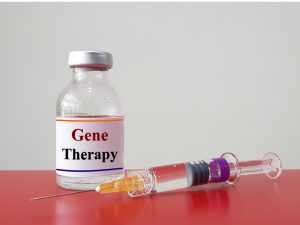
Manufacturing of GM1 gene therapy candidate PBGM01 from a dedicated suite at CDMO Catalent will begin by the end of the of the year, says Passage Bio.
In July 2019, Passage Bio announced it had contracted Paragon Bioservices – fresh from its $1.2 billion acquisition by Catalent – to build a dedicated suite at its Harmans, Maryland facility to produce its AAV-delivered gene therapies for its monogenic central nervous system diseases; specifically GM1 gangliosidosis.
GM1 is a rare monogenic recessive lysosomal storage disease that results in progressive damage to both the CNS and the peripheral tissues, and Passage’s candidate PBGM01 intends to treat infantile GM1 through a next-generation AAVhu68 viral vector intended to deliver modified DNA encoding the b-gal enzyme to a patient’s cells. The company received US Food and Drug Administration (FDA) Orphan Drug Designation for the candidate in April.

Image: iStock/sittithat tangwitthayaphum
Last week, Passage told investors during a Q2 2020 call the deal with Paragon/Catalent has allowed the firm to ensure control of its supply chain.
CEO Bruce Goldsmith said he expects the dedicated manufacturing suite to be functional by year-end. “Once it is up and running, the cGMP suite will be capable of meeting production requirements for our current lead product candidate’s clinical needs through early commercialization.”
He continued: “Having our own dedicated suite is an important step toward our goal of having expanded control of the supply chain, which we believe will set us up for both clinical and commercial success by allowing for greater flexibility in terms of scalability and prioritization as we move products through development.”
To that end, the firm has also signed agreements with numerous suppliers for both upstream manufacturing components and service providers, though Goldsmith did not divulge which companies are involved. However, the firm has previously said it has selected Pall’s iCELLis single-use fixed-bed bioreactor as a scalable alternative for the cultivation of adherent cells.
About the Author
You May Also Like

schedl_b_and_w.jpg?width=100&auto=webp&quality=80&disable=upscale)
schedl_b_and_w.jpg?width=400&auto=webp&quality=80&disable=upscale)


